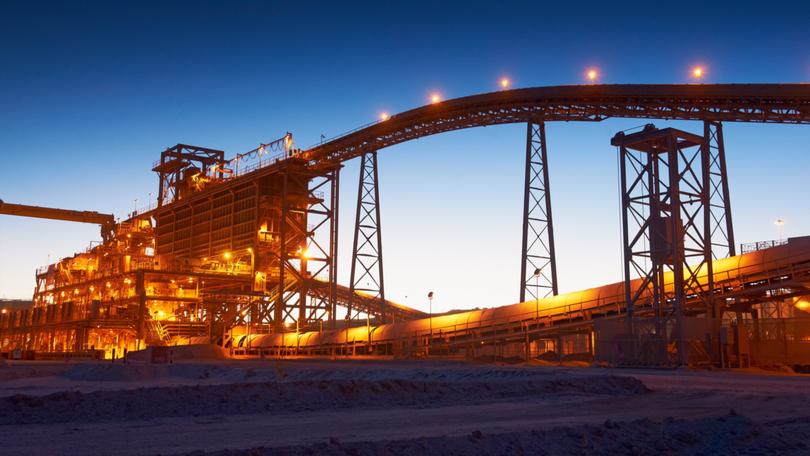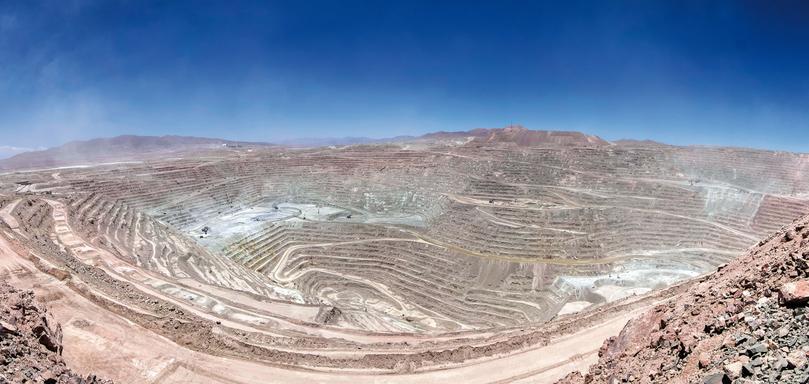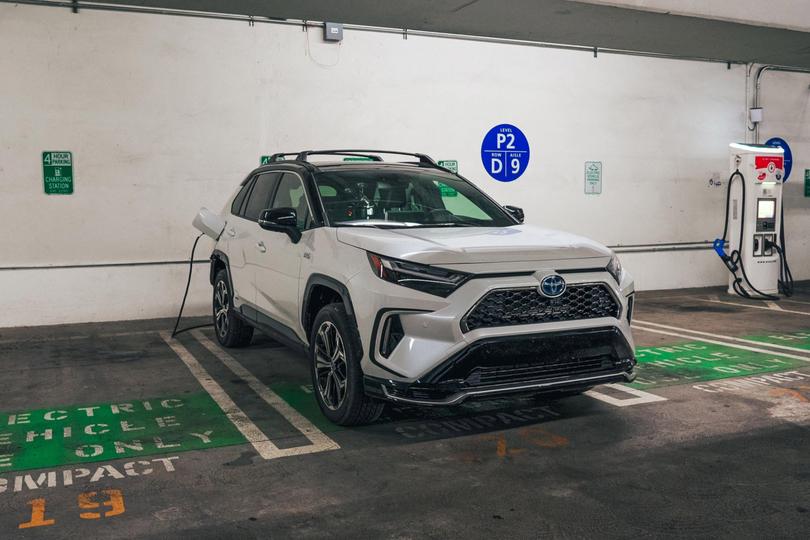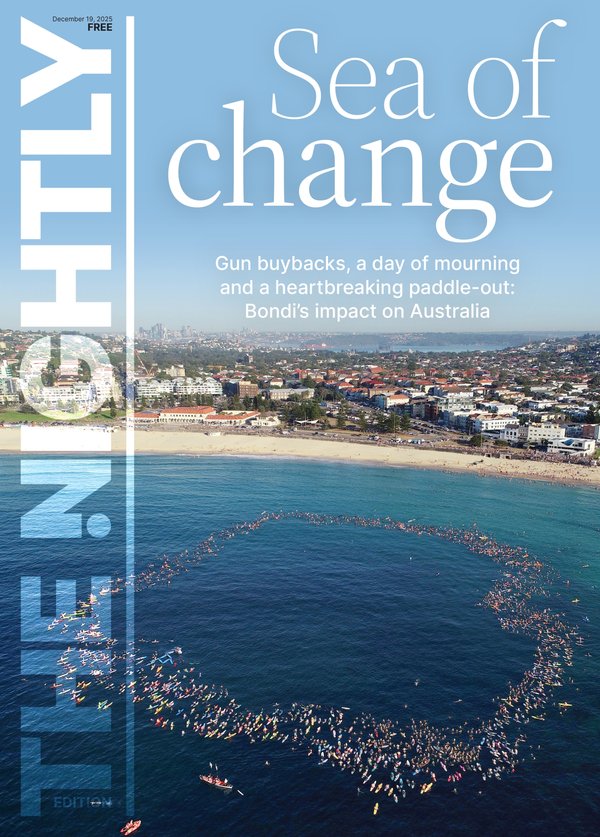JACKSON HEWETT: BHP lights up for energy transition but wary of Donald Trump’s trade upheaval

The Big Australian sees no sign of the global push for electrification slowing down, highlighting the ongoing performance of its copper division.
Copper was the bright spark in an otherwise lacklustre set of results hurt by a fall in the iron ore price as China’s demand for big infrastructure soured.
Coming up on its 140th year BHP is firmly focused on its long-term bets for the energy transition and for a world where a growing population would drive demand for fertiliser from its Canadian potash mines.
Sign up to The Nightly's newsletters.
Get the first look at the digital newspaper, curated daily stories and breaking headlines delivered to your inbox.
By continuing you agree to our Terms and Privacy Policy.In the short term, chief executive Mike Henry was increasingly bullish about the global economy.
“We expect global economic growth to … gradually recover as interest rates continue to be lowered. In China, we see early signs of recovery, (with) policy support to re-balance its economy and improve domestic demand in the near term,” chief executive Mike Henry said.
That is if Donald Trump doesn’t step in a ruin the rebound with a global trade war.
“In the near term, we do expect a degree of ongoing volatility and uncertainty due to potential policies affecting trade flows and inflation,” Mr Henry said.
BHP sees four major mega trends out to 2050 as the drivers for its business.
A growing and increasingly urbanised population will add another 10 billion people, with 6.6 billion of those to live in cities. Baselined back to today, that is 20 per cent more people, and a 50 per cent increase in the amount of urbanisation. That will require more infrastructure, taller buildings and stronger power grids.
BHP believes the next two factors will see a doubling in demand.
A greater population will enjoy greater wealth, with the company forecasting an extra $US160 trillion in new wealth pushing global GDP to $330t by 2050. As citizens become wealthier, they’ll be buying higher value items such as electronics, eating better food requiring more fertiliser and upgrading infrastructure and buildings.
Where the real copper hits the road, however, is the incredible forecast demand for power centres. According to the International Energy Agency, data centre power demand has been growing by 20-40 per cent annually and shows no sign of slowing down. In Denmark, data centre energy use is projected to rise six times by 2030 to account for almost 15 per cent of the country’s electricity use. It is already 20 per cent in Ireland.
Add to that some 17 million electric cars sold in 2024 and BHP thinks it is on a financial powerhouse.

“The digitalisation of our world is also driving demand ... artificial intelligence and other technologies are likely to mean the world will need much more data storage and much more processing power,” Mr Henry said.
“This dynamic makes BHP’s commodities highly attractive. Not only are they leveraged to these mega trends, they also have large enduring markets, diverse end users and differentiated demand drivers and steep cost curves.”
BHP hopes to squeeze another 50 per cent out its giant Escondida copper mine in Chile, intends to double output from its South Australian copper mines and believes it is sitting on one of the most significant copper discoveries in decades in Argentina.
Copper is now becoming so important to BHP that is now nearly 40 per cent of the company’s earnings, compared to a quarter last year.
Part of the upsizing in earnings composition comes from the decline in the iron ore price. That has fallen back from $US130 a tonne a year ago to around $US100 today.
BHP doesn’t expect China’s mills to rebound from their current output of 1 billion tonnes until the end of the decade, and the company is focused on keeping costs down.

It sees a world where iron ore ranges from $US80 to $US100 per tonne, but it is not expecting it to fall below that. Other global iron ore miners, particularly those in China and India have costs of $US90 a tonne, which means that supply will drop off as the price falls, putting a floor under the price.
That should be encouraging news for Australia’s tax revenues. Treasury has a model that forecasts iron ore in the mid $US60s, which is why there are consistent upgrades in the budget for company revenue from miners.
That said, the rule of thumb is that for every $US10 drop in the price of iron ore, budget revenue drops by $500m.
Coal is increasingly a smaller part of BHP’s portfolio, whittled down to just the steelmaking variety and profits in the division have been similarly affected by the decline in steelmaking. It is also a much lower margin business, delivering 20 per cent returns, compared to the 50 per cent plus margins for iron ore and copper.
BHP still thinks there is life in steelmaking coal production however, banking on a surge in Indian steel production, that will increasingly look for the lowest emission solutions.
“Hard coking coal importing countries such as India should see growing and resilient demand for decades to come,” BHP said.
While BHP thinks it has the right suite of products to meet its global predictions, it has remained a cautious company under Mr Henry and its soon-to-depart chairman Ken MacKenzie.
The company’s long-dated ambitions means it wants to avoid unnecessary risk. Global economic ructions are impossible to predict, and BHP is cautious about taking on too much debt in its expansionary ambitions.
The company is sitting on one its lowest levels of debt in history.
“This is a conservative balance sheet which provides protection at all points in the cycle,” chief financial officer Vandita Pant told investors.
“Even if in a downturn our net debt goes above our target range, we remain confident in our position and have levers at our disposal to manage it.”
That dry powder might come in very handy if a trade war upends the global economy.

